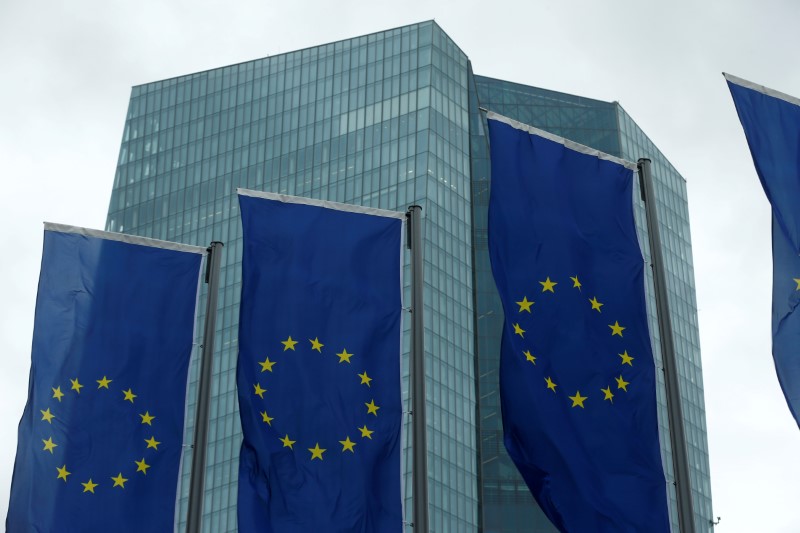 © Reuters. FILE PHOTO: The European Central Bank headquarters are pictured in Frankfurt
© Reuters. FILE PHOTO: The European Central Bank headquarters are pictured in FrankfurtBy Francesco Canepa and Balazs Koranyi
FRANKFURT (Reuters) – The European Central Bank is unlikely to ditch a pledge to keep buying bonds at next week’s meeting as rate setters need more time to assess the outlook for the economy and the euro, three sources close to the matter said.
The ECB signaled last week a growing appetite for revising its policy message in “early” 2018, and specifically a promise to continue its money-printing program until inflation heads back to target.
This has led investors to bring forward to December their expectations for the first ECB interest rate hike since 2011 and fueled a rise in the euro
But three sources on or close to the ECB’s policy-making Governing Council said any fundamental change to the guidance was likely to come only later, with the March meeting, when policymakers get updated economic forecasts, seen as a more likely option.
“We need more thorough analysis before making any change,” one of the sources said.
This would still give ECB President Mario Draghi room to use the news conference after the decision to drop informal hints at what may be coming.
A spokesman for the ECB declined to comment.
The ECB has tied the first rate move to the end of its 2.55 trillion euro ($3.13 trillion) quantitative easing scheme, making any communication about it highly sensitive for financial markets.
While the sources said the stronger euro was largely testament to the strength of the bloc’s economy, they cautioned investors had overreacted to the accounts of the December meeting published last Thursday.
For one, any hardening of the policy message depended on further improvements in the economy, but euro zone inflation was still slowing and was well below the ECB’s target of almost 2 percent.
Second, the euro, at around $1.2230 on Tuesday, was roughly 4.5 percent above the level incorporated in the ECB’s December forecast and rate-setters needed to evaluate the impact of this rise on prices.
“A further 5 percent rise in euro against the dollar would lead to 0.5 percent point lower inflation in 2019 versus the baseline,” Nordea economist Andreas Steno Larsen said.
But he argued that last summer the ECB waited until the euro was 8 percent above its projection before verbally intervening, suggesting that the ECB still had tolerance for a stronger currency.
A stronger euro tends to dampen inflation by making exports dearer and imports cheaper.
“The market reaction to the minutes was excessive,” one of the sources said, referring to the rally after the ECB published the accounts of the December rate meeting last Thursday.
The ECB has pledged to keep rates at their current, record low levels “well past” the end of its bond buys, a signal markets have taken to mean around three to six months.
Even a prominent critic of easy money like German central bank governor Jens Weidmann said late last week the chances of a sudden change to ECB rates was low.
But fellow hawk Ardo Hansson, the Estonian central bank governor, implicitly kept a December hike in play by saying on Monday the ECB could end its bond purchases in one go after September.
Fusion Media or anyone involved with Fusion Media will not accept any liability for loss or damage as a result of reliance on the information including data, quotes, charts and buy/sell signals contained within this website. Please be fully informed regarding the risks and costs associated with trading the financial markets, it is one of the riskiest investment forms possible.
Source: Investing.com




























